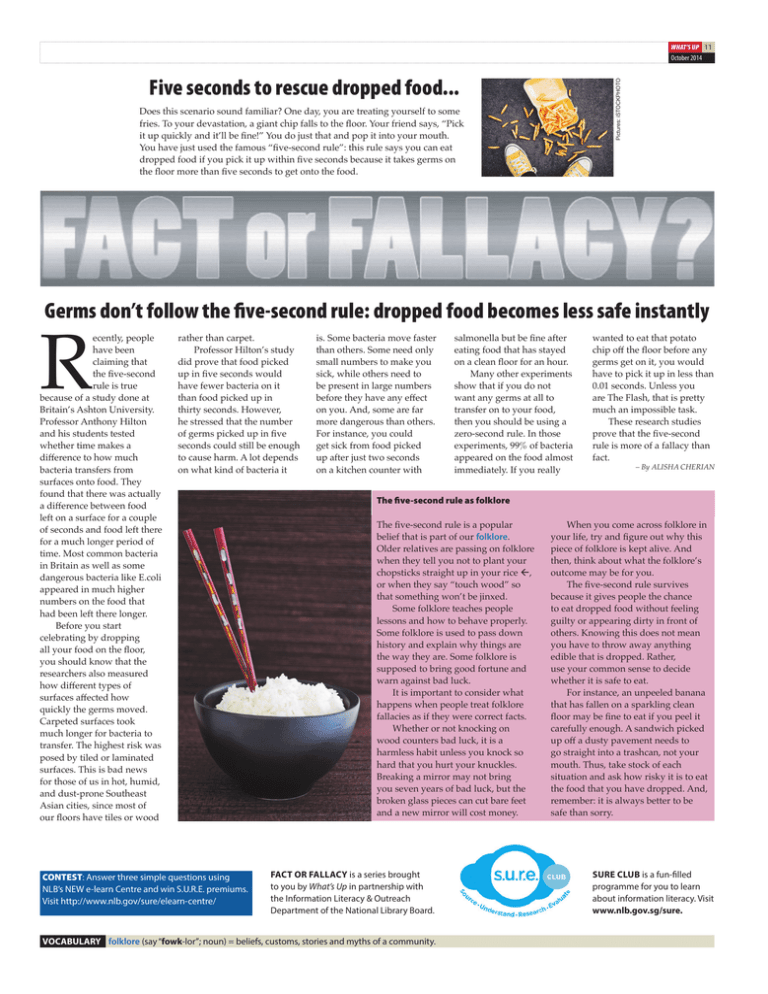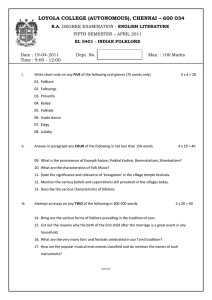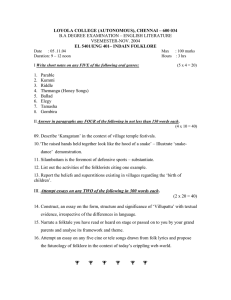Five seconds to rescue dropped food
advertisement

WHAT’S UP 11 October 2014 Pictures: iSTOCKPHOTO Five seconds to rescue dropped food... Does this scenario sound familiar? One day, you are treating yourself to some fries. To your devastation, a giant chip falls to the floor. Your friend says, “Pick it up quickly and it’ll be fine!” You do just that and pop it into your mouth. You have just used the famous “five-second rule”: this rule says you can eat dropped food if you pick it up within five seconds because it takes germs on the floor more than five seconds to get onto the food. R Germs don’t follow the five-second rule: dropped food becomes less safe instantly ecently, people have been claiming that the five-second rule is true because of a study done at Britain’s Ashton University. Professor Anthony Hilton and his students tested whether time makes a difference to how much bacteria transfers from surfaces onto food. They found that there was actually a difference between food left on a surface for a couple of seconds and food left there for a much longer period of time. Most common bacteria in Britain as well as some dangerous bacteria like E.coli appeared in much higher numbers on the food that had been left there longer. Before you start celebrating by dropping all your food on the floor, you should know that the researchers also measured how different types of surfaces affected how quickly the germs moved. Carpeted surfaces took much longer for bacteria to transfer. The highest risk was posed by tiled or laminated surfaces. This is bad news for those of us in hot, humid, and dust-prone Southeast Asian cities, since most of our floors have tiles or wood rather than carpet. Professor Hilton’s study did prove that food picked up in five seconds would have fewer bacteria on it than food picked up in thirty seconds. However, he stressed that the number of germs picked up in five seconds could still be enough to cause harm. A lot depends on what kind of bacteria it CONTEST: Answer three simple questions using NLB’s NEW e-learn Centre and win S.U.R.E. premiums. Visit http://www.nlb.gov/sure/elearn-centre/ is. Some bacteria move faster than others. Some need only small numbers to make you sick, while others need to be present in large numbers before they have any effect on you. And, some are far more dangerous than others. For instance, you could get sick from food picked up after just two seconds on a kitchen counter with salmonella but be fine after eating food that has stayed on a clean floor for an hour. Many other experiments show that if you do not want any germs at all to transfer on to your food, then you should be using a zero-second rule. In those experiments, 99% of bacteria appeared on the food almost immediately. If you really wanted to eat that potato chip off the floor before any germs get on it, you would have to pick it up in less than 0.01 seconds. Unless you are The Flash, that is pretty much an impossible task. These research studies prove that the five-second rule is more of a fallacy than fact. – By ALISHA CHERIAN The five-second rule as folklore The five-second rule is a popular belief that is part of our folklore. Older relatives are passing on folklore when they tell you not to plant your chopsticks straight up in your rice , or when they say “touch wood” so that something won’t be jinxed. Some folklore teaches people lessons and how to behave properly. Some folklore is used to pass down history and explain why things are the way they are. Some folklore is supposed to bring good fortune and warn against bad luck. It is important to consider what happens when people treat folklore fallacies as if they were correct facts. Whether or not knocking on wood counters bad luck, it is a harmless habit unless you knock so hard that you hurt your knuckles. Breaking a mirror may not bring you seven years of bad luck, but the broken glass pieces can cut bare feet and a new mirror will cost money. Fact Or Fallacy is a series brought to you by What’s Up in partnership with the Information Literacy & Outreach Department of the National Library Board. VOCABULARY folklore (say “fowk-lor”; noun) = beliefs, customs, stories and myths of a community. When you come across folklore in your life, try and figure out why this piece of folklore is kept alive. And then, think about what the folklore’s outcome may be for you. The five-second rule survives because it gives people the chance to eat dropped food without feeling guilty or appearing dirty in front of others. Knowing this does not mean you have to throw away anything edible that is dropped. Rather, use your common sense to decide whether it is safe to eat. For instance, an unpeeled banana that has fallen on a sparkling clean floor may be fine to eat if you peel it carefully enough. A sandwich picked up off a dusty pavement needs to go straight into a trashcan, not your mouth. Thus, take stock of each situation and ask how risky it is to eat the food that you have dropped. And, remember: it is always better to be safe than sorry. SURE CLUB is a fun-filled programme for you to learn about information literacy. Visit www.nlb.gov.sg/sure.


